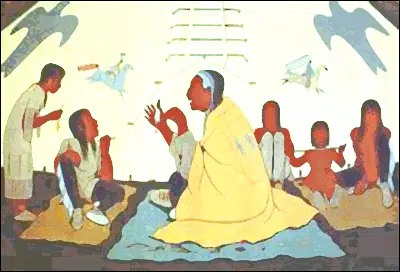
Aboriginal Story Telling Month
The Battlefords Library is hosting Aboriginal Story Telling today, February 6th, from 1:30 to 4 p.m.
Join us for storytelling, dancing, an interactive display, and snacks. Everyone is welcome!
From Saskatchewan Libraries …”For Aboriginal people, storytelling is both a gift, and a very old custom, sanctioned by the people. It has a place, and it has those who are recognized by the community as translators of this custom. In Aboriginal storytelling there is a difference between stories used more for entertainment and those that are more focused on the teachings of culture, ceremonies, and spirituality.
There are many stories that are tied to the ceremonies and spirituality of Aboriginal culture. Stories of this nature are used not as entertainment, but as messengers. These stories may not be as entertaining to those unaccustomed to the process of why and what we communicate. These stories are used more as a bridge to get a teaching across to the audience; in these instances the actual stories may be nothing more than a stage prop, and the teaching or meaning of the story is the main attraction.


